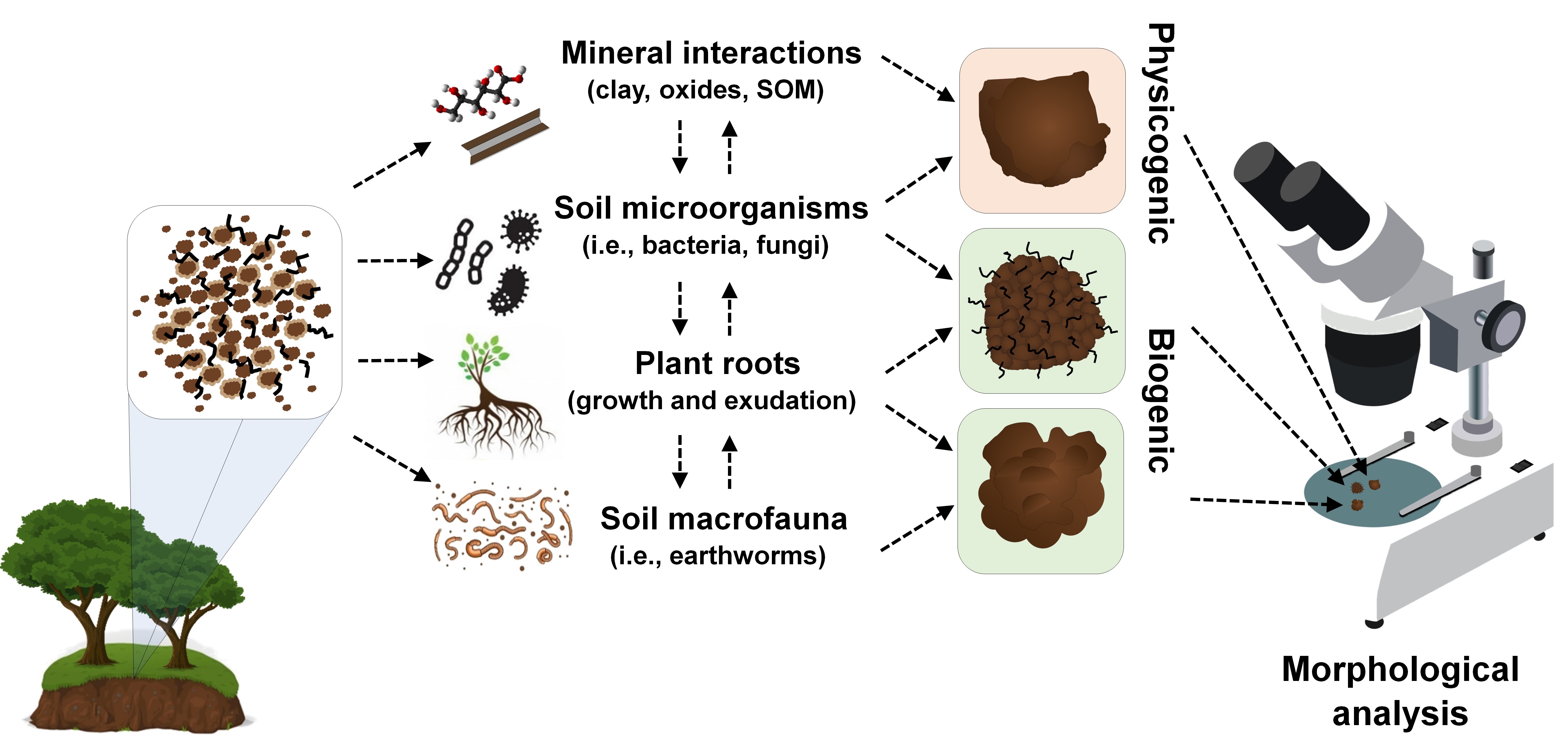Biogenic and physicogenic aggregates: formation pathways, assessment techniques, and influence on soil properties
24/nov/2021
ABSTRACT: The soil particles can be gathered through physical and/or chemical processes in association with the biological activity, leading to the formation of aggregates. Soil aggregates has several functions in the soil, increasing macroporosity and water circulation – consequently reducing soil erosion and mechanical resistance to root growth, contributing to greater fixation of plants to the soil and absorption of water and nutrients, and protection of intra-aggregate organic matter. The aggregates were initially classified morphologically and in terms of their […]
Influence of ZnO Nanoparticles and a Non-Nano ZnO on Survival and Reproduction of Earthworm and Springtail in Tropical Natural Soil
13/maio/2019
ABSTRACT: In recent years, various studies and development using nanoparticles (NPs) have been carried out in the most diverse areas of knowledge. Although nanomaterials are widely employed by many sectors and some may have a fertilizing potential, little is known about their effects on the environment. This study aimed to evaluate the effect of applying, in tropical natural soil, different contents of nanoparticles of zinc oxide (NPs-ZnO) and non-nano zinc oxide (ZnO) on soil pH and on the survival and […]
Morphological Diversity of Springtails in Land Use Systems
05/set/2018
ABSTRACT: Springtails (Collembola) are soil organisms with wide morphological diversity and are sensitive to alterations in the soil, regardless of whether they are human-caused or not. The aim of this study was to evaluate the influence of land use on the morphological diversity of springtails and verify their relationships with soil physical, chemical, and microbiological properties. Samples were collected in the eastern region of Santa Catarina, in three municipalities: Joinville, Blumenau, and Timbó. They included the following land use systems […]
Collembola Community Structure as a Tool to Assess Land Use Effects on Soil Quality
09/dez/2016
ABSTRACT: Collembolan species are differently affected by soil tillage (conventional, minimum tillage, and no-tillage) and are known to modify plant growth. This study relies on the relationships between Collembola community structures and land use systems as a proxy for characterizing changes in soil quality. Thus, Collembola community structure (eco-morphological groups – edaphic, hemiedaphic and epigeic, and morphotypes) were examined in a no-tillage system and crop-livestock integration system to evaluate the discriminative power of the Collembola community structure and to determine […]
Litter Decomposition of Two Pioneer Tree Species and Associated Soil Fauna in Areas Reclaimed after Surface Coal Mining in Southern Brazil
17/out/2016
ABSTRACT Decomposition of leaf litter from pioneer tree species and development of associated soil meso- and macrofauna are fundamental for rehabilitation processes in reclaimed coal mining areas. The aim of our study was to evaluate decomposition of Schinus terebinthifolius and Senna multijuga to answer three basic questions: (i) What type of leaf litter degrades faster in reclaimed coal mining areas? (ii) Is leaf decomposition correlated with the stage of regeneration and exposure time? and (iii) Does the type of leaf […]
Comportamento espectral de materiais de solos e de estruturas biogênicas associadas
01/dez/1998
No presente estudo, verificou-se a interferência da macrofauna edáfica sobre os atributos físicos e químicos e sua relação com a reflectância espectral de um Latossolo Vermelho-Amarelo (LV), Terra Roxa Estruturada latossólica (TR) e Vertissolo (V). Esses solos localizam-se em três pontos ao longo de uma toposseqüência da região de Piracicaba (SP). As amostras foram direcionadas para os agregados formados pelas formigas cortadeiras (Atta sp.), cupins (Cornitermes cumulans) e minhocas (Pontoscolex corethrurus), os quais foram comparados com o solo-controle sem atividade […]

